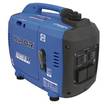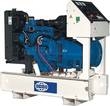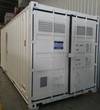Macfarlane Generators Power Calculator
If you require assistance with this Power Calculator or what generator will best suit your requirements, please don't hesitate to contact us.
- Amperes when kVA is known
- Converting kVA to kW
- Converting kW to kVA
- Converting kW to HP
- kVA Required to run motors
Guide to units:
| HP | = |
Horsepower |
| kW | = |
Kilo Watts |
| kVA | = |
Kilo Volt Amps |
| I | = |
Ampere or Current |
| V | = |
Volts |
| PF | = |
Power Factor |
To find the generator that suit your power needs, follow these links:
Portable up to 15kVA 6kVA-35kVA 35kVA-200kVA 200kVA-400kVA Over 400kVA
For a more detailed answer and qualified advice, please contact us here or give us a call
03 9544 4222 (Melbourne) I 02 9899 6699 (Sydney) I 07 3205 6333 (Brisbane)
Power Consumption Calculator
| Appliance | Rated Watts | Rated kVA | Rated kVA |
|---|---|---|---|
| (Appliances) | (To operate appliance) | ( To start appliance) | |
| Air Conditioner (Evaporative model) | 275-1000 | 0.34-1.25 | 1.36-5 |
| Air Conditioner (Reverse cycle) | 200-2500 | 0.25-3.13 | 1-12.5 |
| Clothes Dryer | 2400 | 3 | 3 |
| Coffee Percolator | 550 | 0.69 | 0.69 |
| Can Opener | 100 | 0.13 | 0.52 |
| Deep Freezer | 500 | 0.63 | 2.52 |
| Disposal Unit | 650 | 0.81 | 3.24 |
| Dishwasher | 1000-3000 | 1.25-3.75 | 1.25-3.75 |
| Domestic Water Pumps | 275-1000 | 0.34-1.25 | 1.36-5 |
| Exhaust Fan | 40 | 0.05 | 0.2 |
| Food Processor | 500 | 0.63 | 2.52 |
| Floor Polisher | 350 | 0.44 | 1.76 |
| Frypan | 1400 | 1.75 | 1.75 |
| Hair Dryer | 1500 | 1.88 | 1.88 |
| Hotwater Service | 2500-3000 | 3.13-3.75 | 3-13-3.75 |
| Iron | 800-1500 | 1-1.88 | 1-1.88 |
| Kettle or jug | 1600-3000 | 2-3.75 | 2-3.75 |
| Lights | 25-200 | 0.03-0.25 | 0.03-0.25 |
| Microwave | 1500 | 1.88 | 1.88 |
| Oven | 4000-8000 | 5-10 | 5-10 |
| Radio | 60 | 0.08 | 0.08 |
| Radiator | 1000-2500 | 1.25-3.13 | 115-3.13 |
| Refrigerator (home) | 300 | 0.38 | 1.52 |
| Sewing Machine | 60 | 0.08 | 0.32 |
| Space Heater | 2000 | 2-5 | 2.5 |
| Television | 75-200 | 0.09-0.25 | 0.09-0.25 |
| Toaster | 250-1250 | 0.3-1.56 | 0.3-1.56 |
| Washing Machine | 500-3000 | 0.63-3.75 | 2.52-15 |
| Welder 140A | 5000 | 6.25 | 8 min |
Please Note:
Inductive loads (typically electric motors, electric pumps, electric compressors and air conditioners) require 6-8 times more current to start than to run. Most generators can provide 100% overload for start up purposes. A 1 Hp electric motor therefore will require 3-4kVA for start up. Once the 1 Hp electric motor has started, it will only consume 1 kVA leaving a extra 2-3kVA available for other appliances.
However, the newer 'Inverter' style generators may be more efficient and capable of starting higher loads.
Generator Selection
The generator size must be equal or greater than the total consumption of all applications. The higher starting requirement must be taken into account accordingly. To maximise the generator potential, the largest electrical motor should be started on its own and further appliances should only be switched on thereafter.






